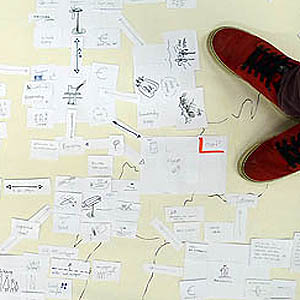Discussions & Movements in Design Research
DOI:
https://doi.org/10.7577/formakademisk.137Keywords:
design research, research by design, practice based research.Abstract
The main approach of this paper is to look at design research from a systems-oriented perspective. This implies that design research is understood as a dynamic and emergent field of interrelated or contradicting thoughts, concepts and ideas. The first three sections of this paper draw cross-sections into the emerging richness in design research as it matures as a genuine mode of knowledge production. They address some of the positions, concepts, and discussions going on in the field, arguing that practice research in design is the most central. The current state is discussed and the relation between design research and other modes of knowledge production are looked at. A main tendency seems to be that design research is moving towards greater complexity both in issues and approaches and that Research by Design is becoming ever more central. Research by Design emphasizes insider perspectives, a generative approach, operates in rich and multiple layers and relates to real life contexts. The output is new communicable knowledge that is only found within design practice. The next two sections of the paper discuss the various possible relations between design practice and reflection. These span from distant perspectives where design practice is observed by outsider researchers, looking at practice retrospectively or contemporarily as in case studies, to participatory research and insider perspectives where the designer-researcher uses his or her own practice as a means for investigation and a bases and subject for reflection and knowledge production. The last section proposes the critical application of multiple perspectives, methods and media in composite approaches to design research. This analysis does not claim to provide a complete picture, but it suggests a method of looking at the field of design research in both a more holistic and more specific way. This could be helpful to position the individual design researchers approach in the complex landscape of design research. Arguing that ‘traditional sciences’ are very complex and manifold, design research is in itself a very complex, if not one of the most complex field of knowledge production. The paper claims that such a complexity demands an equally rich repertoire of interrelated methods and positions.
Published
2010-07-04
How to Cite
Sevaldson, B. (2010). Discussions & Movements in Design Research. FormAkademisk, 3(1). https://doi.org/10.7577/formakademisk.137
Issue
Section
Articles
License
Authors who publish with this journal agree to the following terms:
- Authors retain copyright and grant the journal right of first publication with the work simultaneously licensed under a Creative Commons Attribution 4.0 License that allows others to share the work with an acknowledgement of the work's authorship and initial publication in this journal.
- Authors are able to enter into separate, additional contractual arrangements for the non-exclusive distribution of the journal's published version of the work (e.g., post it to an institutional repository or publish it in a book), with an acknowledgement of its initial publication in this journal.
- Authors are permitted and encouraged to post their work online (e.g., in institutional repositories or on their website) prior to and during the submission process, as it can lead to productive exchanges, as well as earlier and greater citation of published work (See The Effect of Open Access).
- The author(s) must manage their economic reproduction rights to any third party.
- The journal makes no financial or other compensation for submissions, unless a separate agreement regarding this matter has been made with the author(s).
- The journal is obliged to archive the manuscript (including metadata) in its originally published digital form for at least a suitable amount of time in which the manuscript can be accessed via a long-term archive for digital material, such as in the Norwegian universities’ institutional archives within the framework of the NORA partnership.
The material will be published OpenAccess with a Creative Commons 4.0 License which allows anyone to read, share and adapt the content, even commercially under the licence terms:
This work needs to be appropriately attributed/credited, a link must be provided to the CC-BY 4.0 licence, and changes made need to be indicated in a reasonable manner, but not in any way that suggests that the licensor endorses you or your use.



